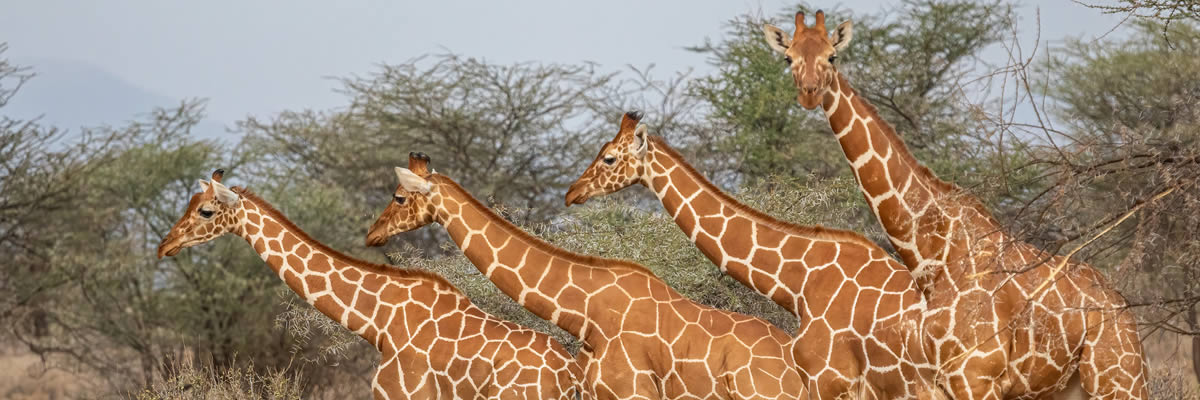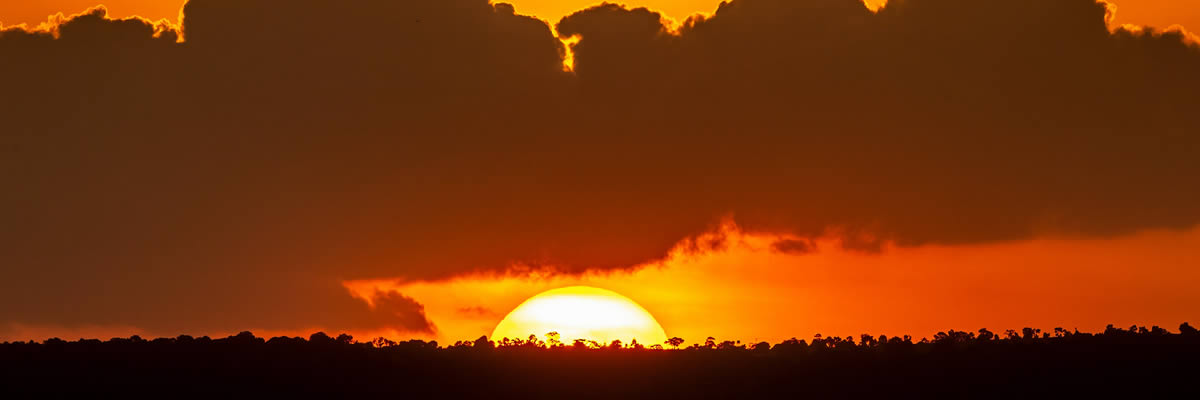Some Kenyan Parks, Reserves and Beaches
MASAI MARA
The game reserve incorporates 1510 km² of incredible, wide-open landscapes and fertile reverie woodland following the looping meanders of the Mara and Talek rivers in Kenya. One glimpse is enough to explain its appeal; it is typical open savannah with a mass of amazing wildlife.There is always game in the ‘Mara’, however it changes its character dramatically with the seasons. The reserve boasts as the world cup of action and photography safaris with fantastic orange tinged sunset’s and a variety of wildlife.
LAKE NAKURU
The most famous of the Rift Valley lakes, Nakuru is a soda lake set within the 62 sq km park, renowned for its magnificent array of birdlife hence the notoriety as the bird watchers paradise. It is the migratory flocks of thousands of greater and lesser flamingo that really create the attraction here, when the lake’s shallow waters turn pink. Black and white rhino, the rare Rothschild’s giraffe, a small herd of buffalo, dikdik, klipspringer, eland, the occasional leopard and many other plains game are also found here.
LAKE NAIVASHA
Lake Naivasha is a beautiful freshwater lake fringed by thick papyrus and its surroundings are rich in natural bounty abound in bird life such as fish eagles, ospreys, lily trotters, a variety of herons and over 200 more species. The lake offers good views and relaxing moments for all travelers be it budget, mid-range or luxury with a variety of accommodations options from camping to five star hotels.
Nearby is the dramatic Hell’s Gate scenic park, overshadowed by the mysterious Mt Longonot. Both parks offer hiking experiences, friendly game viewing options on horse backs and cycling depending with the client’s preference.
SAMBURU
Watered by the muddy UasoNgiro River and natural springs, this reserve is classified as a lowland area, so generally it is hot, arid and dusty. It is also extremely scenic, with ravine areas dominated by acacia and doum palms. Also of interest are the volcanic rock cones and craggy hills, which spread through certain areas of the park. Large numbers of gerenuk make this area exciting but plenty of other species are also common. These include crocodile, hippo, gazelle, Beisaoryx, Grevy’s zebra, Somali ostrich, reticulated giraffe, elephant, vervet monkey, cheetah, leopard and lion that still roam its acacia woodlands, ravines and grasslands. There are also some amazing birds to spot in theriverine forests.
The reserve is home to almost fairy tale like stories that are real but unique among them being the lioness “Kamunyak” who adopted oryx calves and fought off predators attempting to eat them and the most rare phenomena of elephant twins born to ”Bora” their mother.
MERU NATIONAL PARK
Meru is in the northern frontier, east of Mount Kenya. It covers an area of 870 sq km and is still relatively untouched by tourism, which makes it alluring. The animals are found in good numbers, but are shy. This park is one of the driest in the country, though it is criss-crossed by numerous rivers and streams running off nearby mountains. The landscape is wild, endowed with dense ribbons of vegetation dominated by magnificent stands of baobab trees, doum and raphia palms which run through the dry valleys. The area is famous for Elsa, the orphaned lioness reared by Joy and George Adamson and eventually returned to the wilds of Meru.
AMBOSELI NATIONAL PARK
One of the most popular parks in Kenya, we think it is a real gem. Forming part of a massive eco-system, the park itself is only 392 sq km and is situated at the foot of Africa’s highest mountain, Kilimanjaro. This great mountain forms the backdrop to most photographers’ pictures and on a clear day, the snowy peak of Kibo is seen. Amboseli is a striking contrast of snaking lush green marshlands and dirty grey plains. The vast herds of elephants and plains of game are a major attraction in this park.
TSAVO EAST AND WEST NATIONAL PARKS
This huge park is split into two by the main Nairobi to Mombasa highway and covers a total area of around 2,000 sq km. The park is quite arid with only two permanent rivers but its flat landscape is dotted with hills and baobab trees, making it extremely attractive. Tsavo is still famous for the legends of man-eating lion and its ‘red’ elephants, so called because of the red murrum earth with which they spray themselves. Most game congregates among the acacia and raphia palms, which line the riverine areas. Common spots include elephant, buffalo, ostrich, gazelle, giraffe, zebra and the accompanying predatory cats. Less frequent sightings are gerenuk, fringe-eared oryx and Hunters hartebeest. Popular attractions in the park are the Lugard Falls, Yatta Plateau (which is the world’s longest lava flow) and Mzima Springs. Here there is an underground viewing platform to observe crocodile, hippo and the various fish under water.
MOUNT KENYA NATIONAL PARK
Home to the second highest mountain in Africa the park straddles the equator and covers more than 715 sq km. Mount Kenya is seen as sacred by the Kikuyu people, as it is believed their god lives there hence the nickname “Kirinyaga” meaning mountain of whiteness and God dwells in cleanliness.
The mountain’s snow-capped peaks can be seen on clear days, but are often enclosed in low cloud cover. With altitudes ranging from 1,600m to 5,200m, there is a wide range of vegetation. It includes rich sub-alpine flora, low-lying forests and bamboo zones, as well as moorlands and tundra. Common species found are giant forest hog, tree hyrax, white-tailed mongoose, elephant, buffalo, suni, duiker, leopard, black rhino, bushbuck, bongo and a type of ‘golden cat’. Mountain buzzards, tinker birds and various louries are also fascinating spots.
ABERDARE NATIONAL PARK
Slightly larger than Mount Kenya National Park, Aberdare National Park offers an eco-system that is fairly similar. Its mountain ranges climb to over 4,200m and consist mainly of tropical high-alpine vegetation, the park is about 766 sq km in size. In the lower-lying regions, you will find rain and bamboo forests, moorlands, waterfalls, rivers and dams filled with trout. The most common species include giant forest hog, black rhino, elephant, lion, leopard, serval cat and a variety of monkeys as well as spectacular birds.
KENYAN COAST
Kenya offers 536 kilometres of coastline along the warm waters of the Indian Ocean. Much of the coastline remains undeveloped, however there is a range of developed areas starting from Lamu Island in the north and ending at Wasini Island in the south near the Tanzanian border. The coast is served by airstrips near Lamu, at Malindi and the Ukunda airport in Diani, the south coast of Mombasa. Moi International Airport is based in Mombasa where visitors can access the Mombasa North Coast resorts following a short drive. Passengers arriving to Moi International can also transfer to the South Coast Diani resorts by road with a crossing on the Likoni Ferry – a brief trip bridging the half a kilometre gap between north and south coasts?
LAMU ISLAND
This UNESCO World Heritage Site is one of the original settlements in Kenya, dating back to 1370. It is a site steeped in culture and history. It is known for offering comfortable accommodation.
MALINDI
Travelling south from LamuThe area is also steeped in Swahili culture and offers a number of popular resorts. Malindi is 120 kilometres north of Mombasa and transfers can be provided by road from Mombasa or travellers may fly into the Malindi Airport. There are a number of popular resorts in the Malindi area.
WATAMU
Just a few kilometres south of Malindi is Watamu. Here the exceptional beaches are protected by offshore coral providing an opportunity for swimming, snorkelling, SCUBA diving and deep-sea fishing.
KILIFI
The next spot we arrive at on our journey south is Kilifi. Not widely known, Kilifi is 53 kilometres north of Mombasa and offers pristine beaches and a small selection of resorts.
MOMBASA
Mombasa is generally split into three areas. The north and south coasts and the city centre. The city itself is an island, connected to the northwest by a bridge where the airport is located on the mainland. A bridge also connects the city to the north coast where a range of resorts can be found. A ferry connects the island to the south coast. Here you find a number of beaches including the popular Diani Beach, teeming with resorts of every size, standard and budget imaginable.














